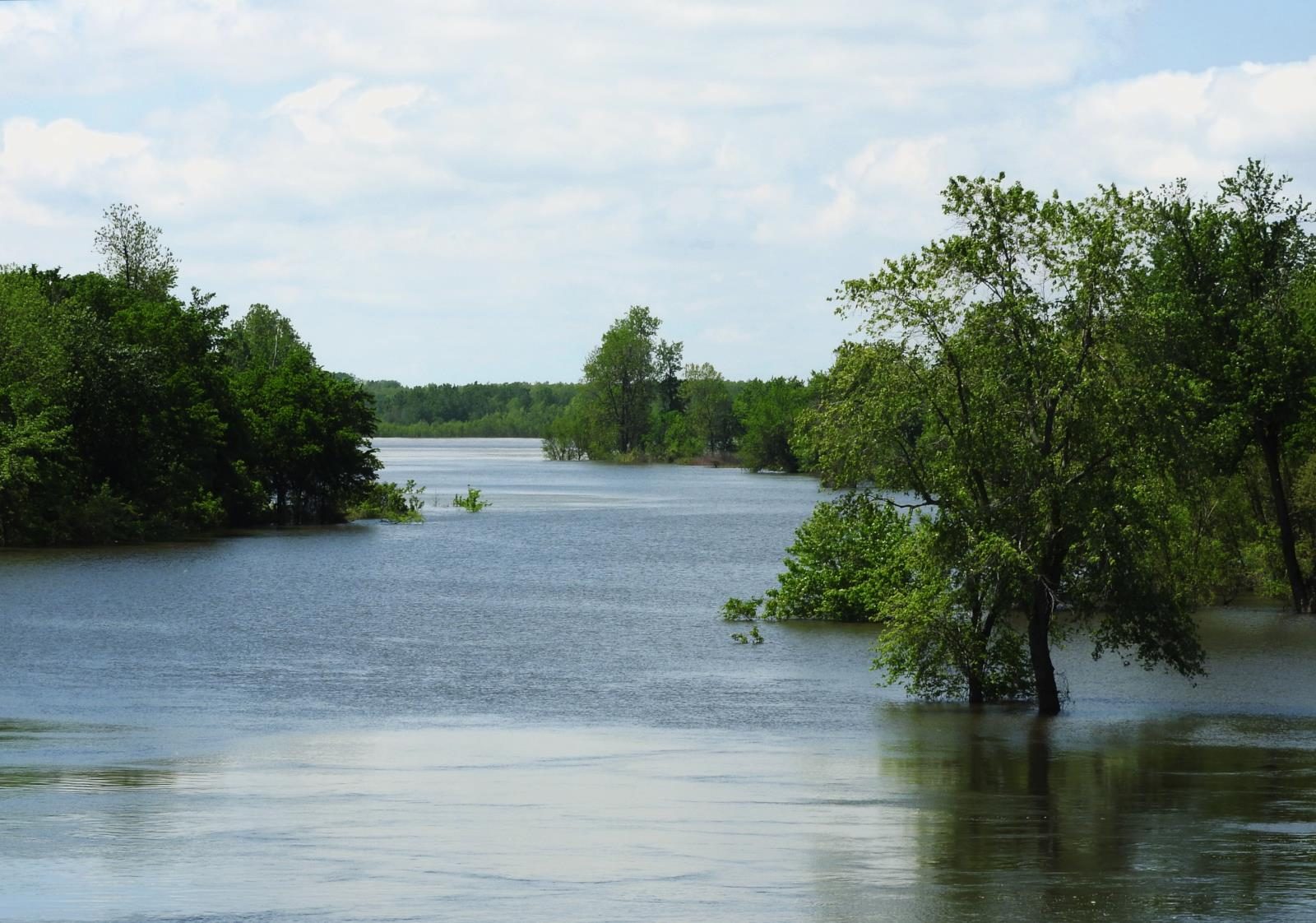Into the Breach
Wetlands for the Anthropocene River
Flood control methods such as levees and dams are reflective of the persistent belief in humanity’s mastery over nature. The Mississippi on the other hand continuously resists human attempts to govern, stabilize, and manage the river and its floodplains. This research project asks how an adaptive, symbiotic, and interconnected co-existence between humans and the environment could be imagined.

Draining the swamp is an old American pastime. The rise of the Mississippi River levees, the logging of bottomland forests, the canalization of streams, and the tilling of fields for agriculture have all combined to fundamentally alter the Midwestern ecology, through a gradual process that began with colonization and culminated in the early twentieth century, when large floodplain tracts were cleared for cotton production. Today, the “Great Swamp” that once rendered the Lower Mississippi Valley impassable has disappeared. Only residual wetlands remain: isolated patches of biodiversity within a radically homogenized agricultural landscape.
Yet the disastrous flood of 1927—taking place at the first culminating moment of the anthropization process—proved to everyone that tightly sealed levees only raise the river’s water level. A number of emergency outlets or “floodways” were set up under the New Deal administration of the 1930s, allowing the Mississippi to jump its armored banks when necessary. Could these emergency floodways become the model for an enduring breach in the watertight engineering system that defines the Anthropocene River?
Into the Breach focuses on the New Madrid Floodway in southeastern Missouri, last activated in 2011 when the US Army Corps of Engineers blew up a so-called “fuseplug” section of the frontline levee in order to lower the river-gauge levels and save the city of Cairo. The water poured over the remains of the levee, inundating large tracts of profitable agricultural land before returning to the Mississippi through an outflow breach located near the river town of New Madrid, Missouri. The future promises ever more frequent activations of the floodway, due in particular to the growing intensity of rainfall fueled by climate change. Other factors include the increasing extent of impermeable, urbanized surfaces and the trend of flood-prone river towns to raise their own levees independently—often to heights beyond those prescribed by the Army Corps.
The wholesale channeling of the Mississippi River system represents a continental-scale version of geoengineering, infused with the persistent belief that natural forces can be thoroughly analyzed, modeled, and predicted. What is left out of the equation, however, are erratic human interventions into a fluctuating general ecology that never stabilizes but only evolves under the pressure of efforts to control it. “Into the Breach” speculates on the possibility of new forms of land stewardship that would allow the periodic return of river water to the surrounding floodplains. What intrinsic values do wetlands provide? How can the rigid barrier of the levee system be modulated to accommodate the river’s natural pulse? Could transformed agricultural practices be maintained despite periodic flooding? How can sustain a human society that can adapt to continuous changes in its environment?
Anthropocene conditions demand, not a hubristic “control of nature,” but instead evolving forms of ecological stewardship at scales ranging from the slowly evaporating bottomland pond to top-level continental watershed. The current Midwestern landscape took shape as a result of the political and technological changes introduced at the time of the New Deal. Today, as political energies gather for a “Green New Deal” in response to the ravages of climate change, it is high time to reimagine wetlands, not as a swamp to be drained, but as a site of dynamic coexistence between humanity and nature.
This project is conceived along four main lines of inquiry, which intersect at specific points while retaining their own intrinsic meanders. First, experience: the unstructured exploration of the physical and imaginary territory of the New Madrid Floodway. Second, registration: the construction of a map/archive which records sedimented layers of engineering and ecological knowledge provoked by the successive “great floods.” Third, vision: the videographic, painterly, and conceptual interpretation of possible futures for the Lower Mississippi. Fourth, politics: an essay/lecture which takes a stand for the transformation of the current river-control regime. Into the Breach aims figuratively and literally to overflow the bounds of the Anthropocene River.
